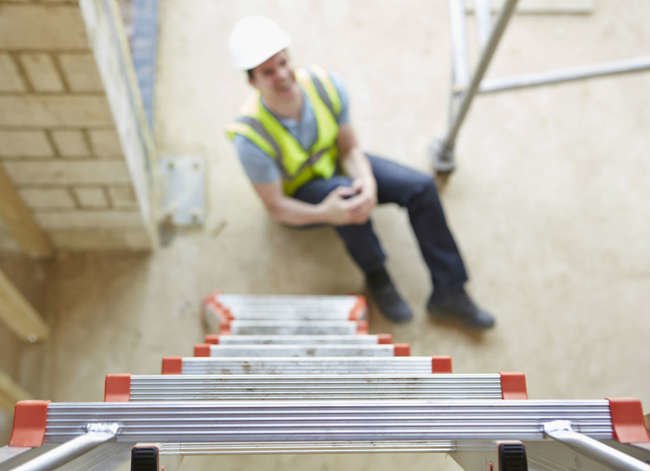

We may earn revenue from the products available on this page and participate in affiliate programs. Learn More ›
Home Advice You Can Trust
Tips, tricks & ideas for a better home and yard, delivered to your inbox daily.
When you need to extend your reach, heed these ladder safety tips.
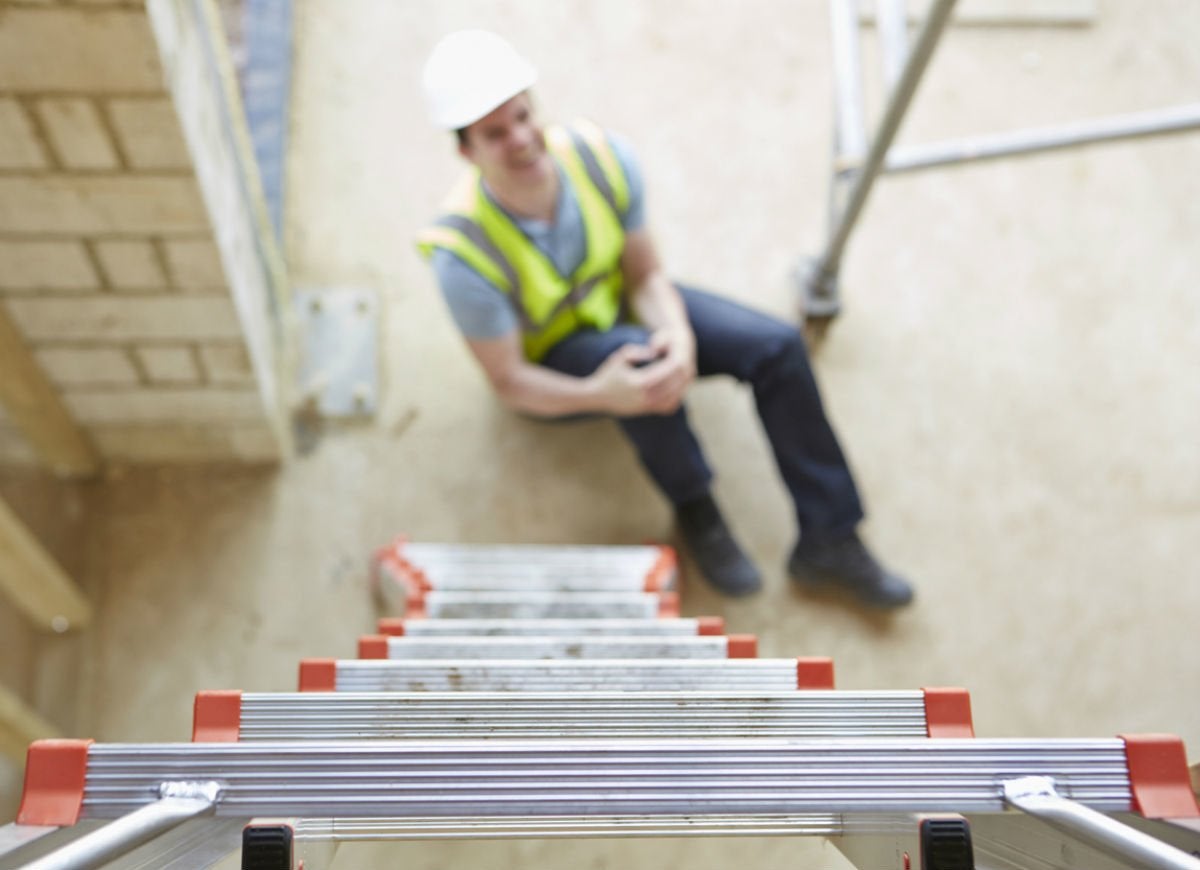
Every year, there are more than 164,000 emergency room-treated injuries and 300 deaths in the United States caused by falls from ladders, according to the World Health Organization. And you don’t have to tumble far to get hurt; most fatal falls are from a height of 10 feet or less!
Yet ladders are basic DIY tools essential to so many projects and tasks, from painting your place and cleaning your gutters to hanging holiday décor. So don’t become a statistic; stay safe by steering clear of the worst accident-inducing mistakes you can make when using a ladder.
#1: Choosing the Wrong Ladder Type
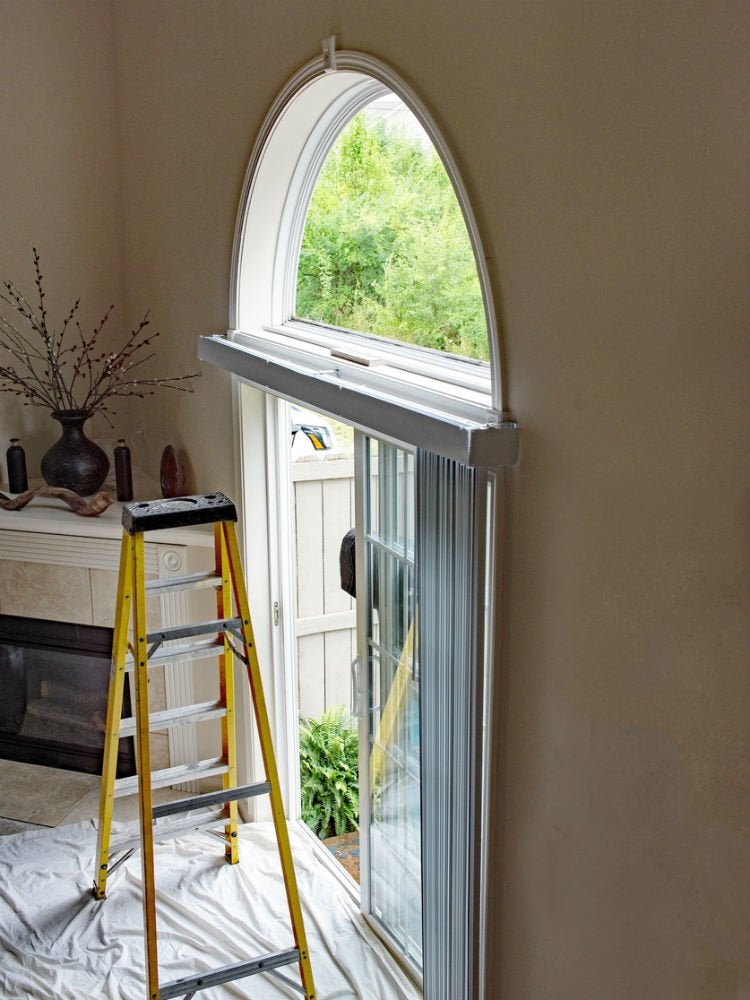
Ladder safety starts with the structure itself. After all, ladders come in different types, materials, and weight capacities. Choosing one that’s not suitable for the environment or task at hand—for example, a low-capacity step-stool instead of a higher-capacity A-frame ladder to replace a first-floor window, or an aluminum model near electrical lines when a non-conductive fiberglass ladder should be used—can increase the risk of injuries, from falls to electrocutions. Consider the project, environment, and the weight of the materials you’ll be carrying while on the ladder and select the best ladder for the job.
#2: Forgetting to Factor in Height

Generally, step-stool, A-frame, or articulated ladders are ideal for indoor projects requiring a lift of two to eight feet, whereas an extension ladder or a taller articulated ladder for outdoors is best for projects requiring a boost of 13 feet or more. But individual ladder types vary in height, and choosing a ladder that’s too short or tall for your height or project can tempt you to stand on tiptoes or bend down to reach the work area, which could destabilize the ladder and cause a fall. When shopping for ladders, remember that a five-foot-six-inch person can only reach four feet higher than the ladder height. So you’d need a four-foot ladder to reach a surface eight feet above the ground.
#3: Resting It on Uneven or Slick Surfaces
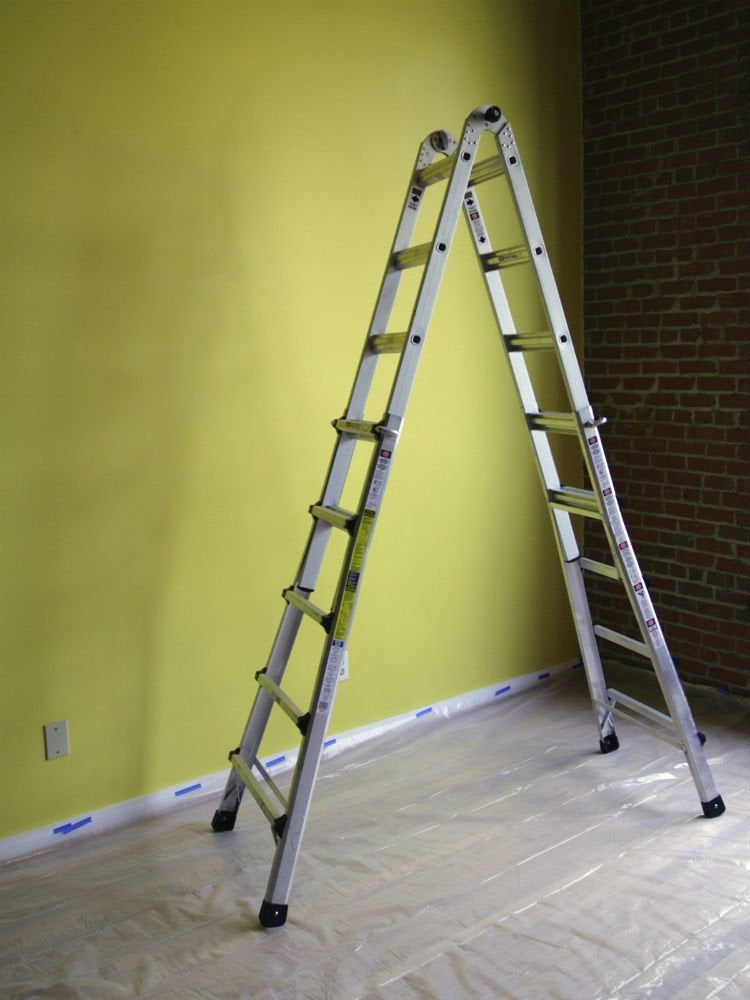
Think twice before you set up your ladder on an uneven or slick surface, such as a bed of rocks or mulch, a plastic sheeting, a freshly waxed floor, or a wet driveway. The feet at the ladder base could move as you shift your weight around the rungs, causing the ladder to slide out from beneath you. For greatest ladder safety, only set up them on solid, level, non-slick surfaces that allow all of the feet to make contact with the ground or floor.
#4: Leaving the Spreaders or Locking Device Unlocked

No need to lock your ladder for a quick light bulb change, right? Wrong! If the spreaders (metal braces) that connect the front to the rear of a ladder are bent or, absent spreaders, the locking device is unlocked, the ladder could close in on itself, jerking you forward or backward. To ensure that your ladder stays open, and you stay aloft, push down the spreaders until flat or engage the locking mechanism before you step up, no matter how small the job.
#5: Placing an Extension Ladder Too Close to the Wall

Unlike step-stool and A-frame ladders, which need no supporting structure to stay upright, extension ladders must be propped up against a structure like a wall and then secured to an upper support on the structure before use. But if the angle between the ladder base and the wall is too steep—that is, the ladder base is placed too close to the wall—the ladder could tilt backward as you climb up.
Follow this formula when using an extension ladder: Place the ladder one foot away from the supporting structure for every four feet of ladder length.
#6: Maintaining Less than Three Points of Contact
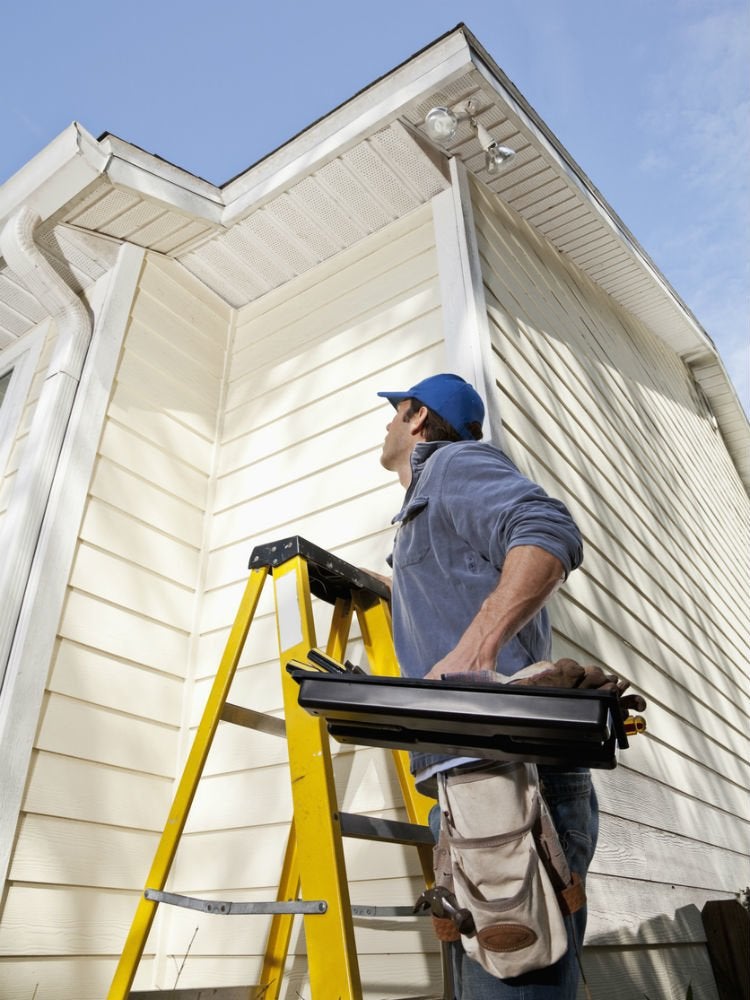
Many a DIYer has ascended a ladder with both hands full of tools, only to be thrown off balance and potentially fall down. Whether you’re climbing up, coming down, or standing on a ladder, always maintain three points of contact with it—either two feet and one hand or two hands and one foot—to keep your balance.
#7: Reaching Beyond the Rails
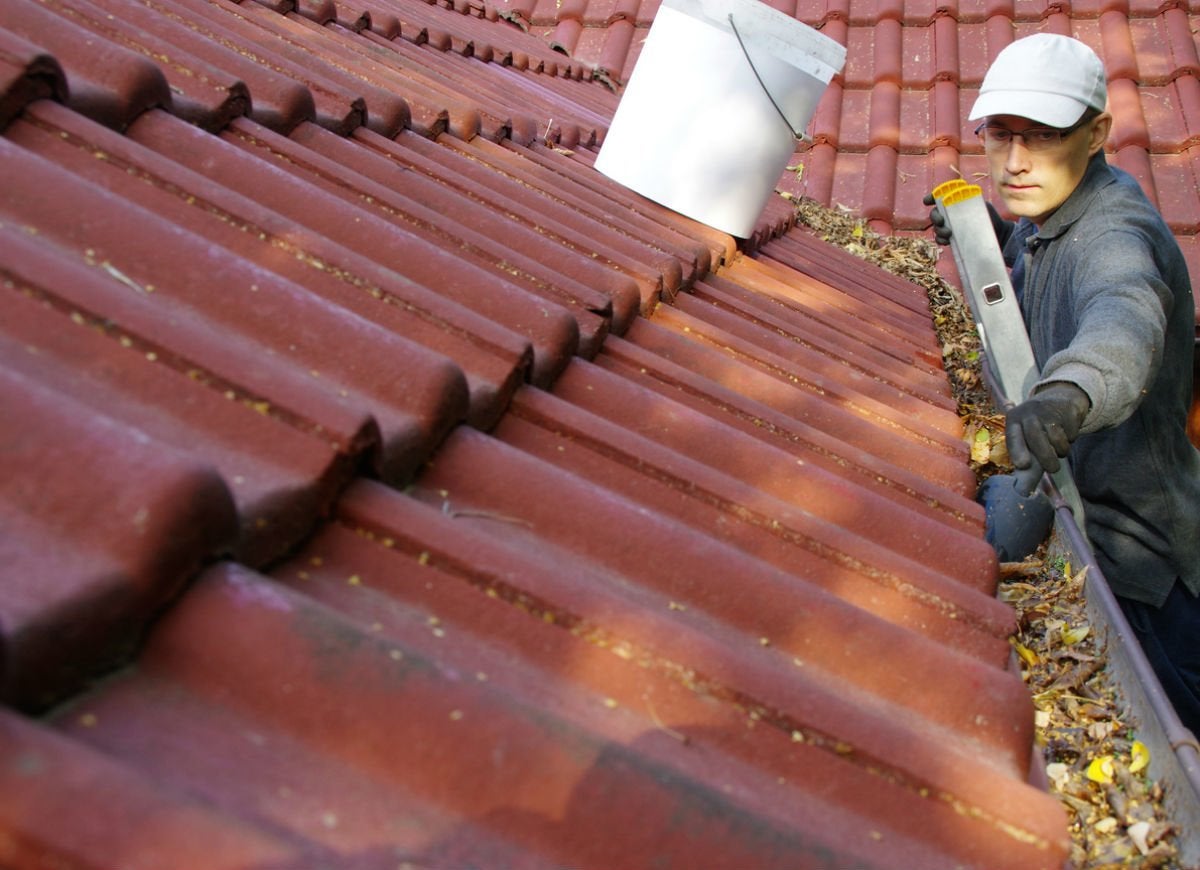
You positioned your ladder a little too far to the left or right of the intended work area and now you’re tempted to stretch your arm or lean your body beyond the ladder’s side rails to reach it. Bad move! Overreaching while on a ladder can tip it over and send you crashing. While standing on a ladder, position yourself so that the buckle of your belt is between the rails. If you can’t reach your target area from that position, don’t stretch; climb down and reposition the steps to maintain ladder safety.
#8: Standing on the Top Cap
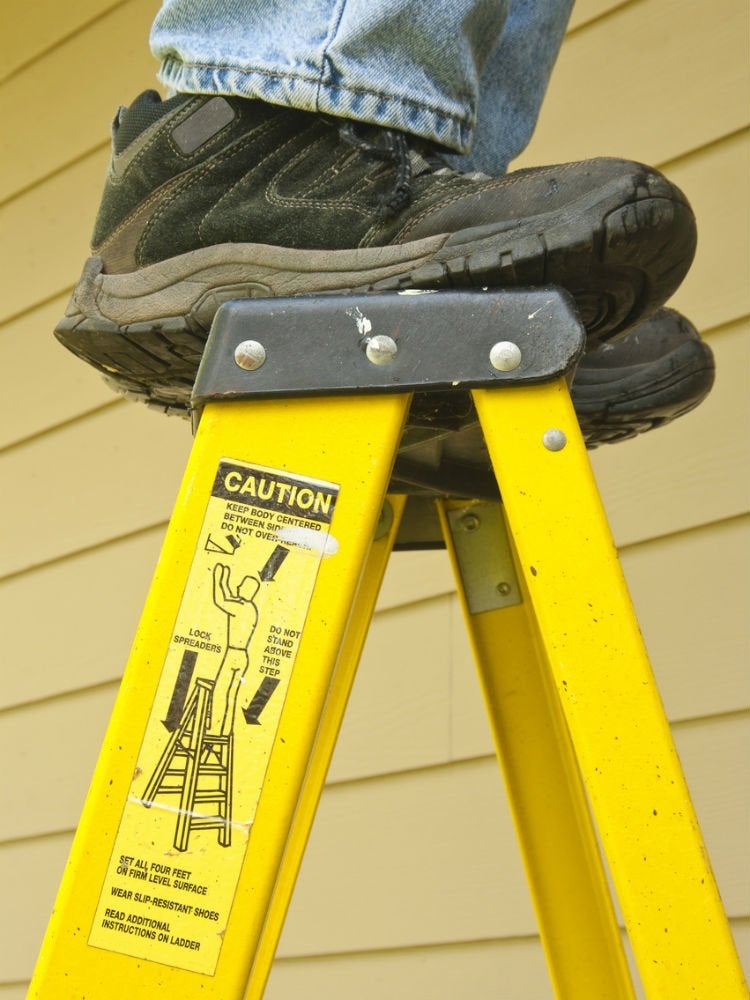
Every ladder should have a rung labeled as the highest safe standing level; stepping above that rung makes the ladder unstable and increases the likelihood of a fall. In general, avoid standing on the top cap (the uppermost platform of the ladder) or the two rungs below it to keep your center of gravity lower and maintain stability. If you can’t comfortably reach the work area, you need a taller ladder.
#9: Bringing a Buddy
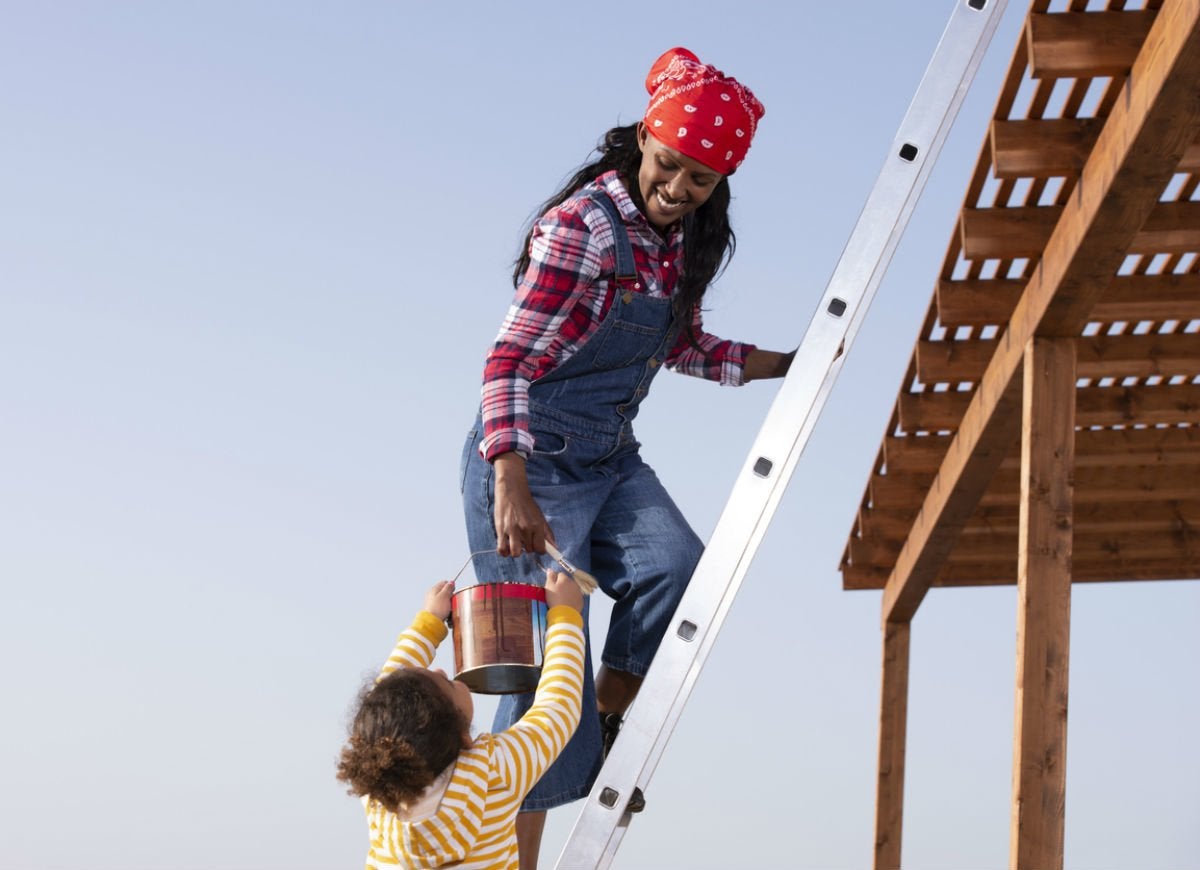
Two’s a crowd on a ladder. If you’re on a ladder and someone climbs up behind you to hand you tools or materials, the ladder is likely to buckle and throw one or both of you backward. With the exception of two-sided ladders that are designed to support two people, one on the front and the other on the rear set of rungs, there should only be one person on a ladder at a time.
#10: Storing Loose Tools on Rungs
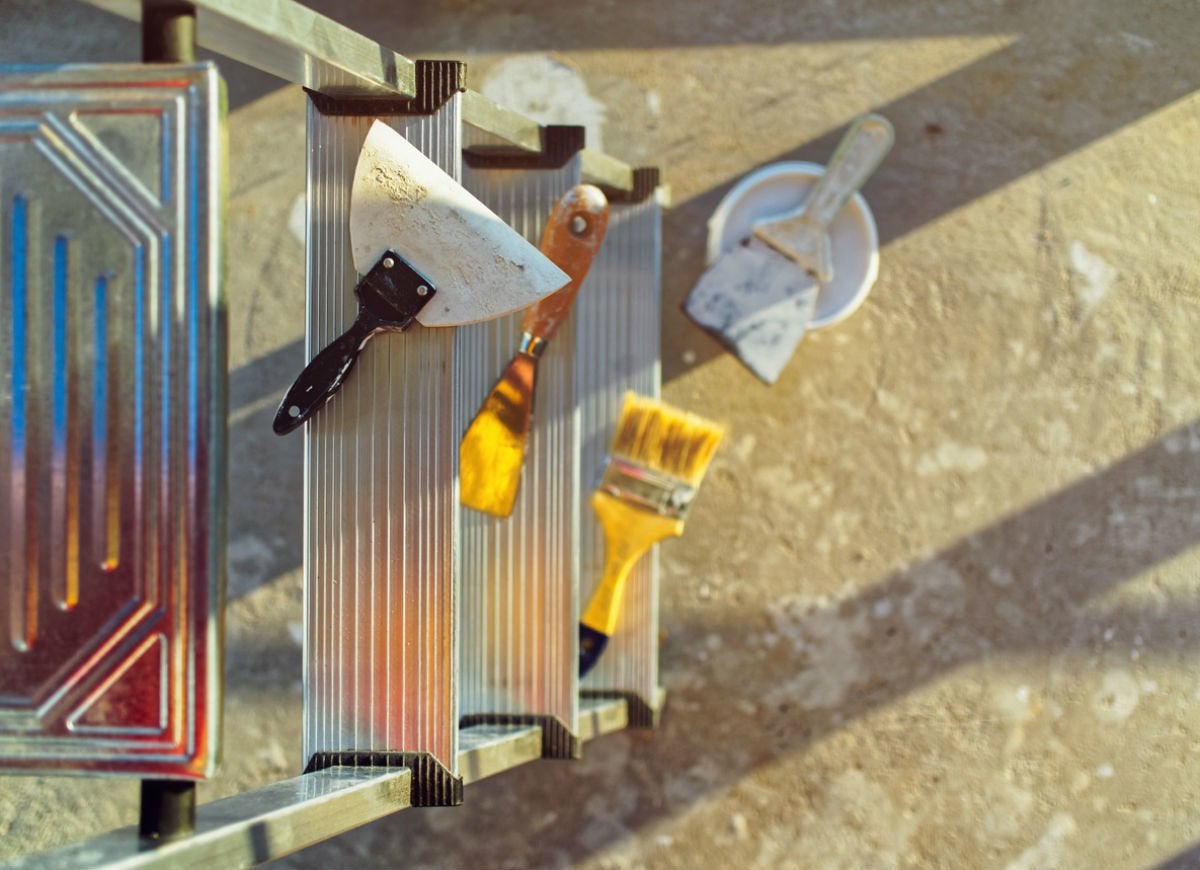
As convenient as it may seem to stash that hammer or paint can on the rung above you, one wrong move and it could land on top of you, delivering a blow to the head. When on a ladder, safely store tools and materials on designated tool trays. If your ladder doesn’t have a tool tray, stash lightweight tools in a tool belt, or raise and lower heavier tools and materials using a ladder lift (such as this option from Racor, available on Amazon), a hoist used to lift items up a ladder.
#11: Leaving a Nearby Door Unlocked
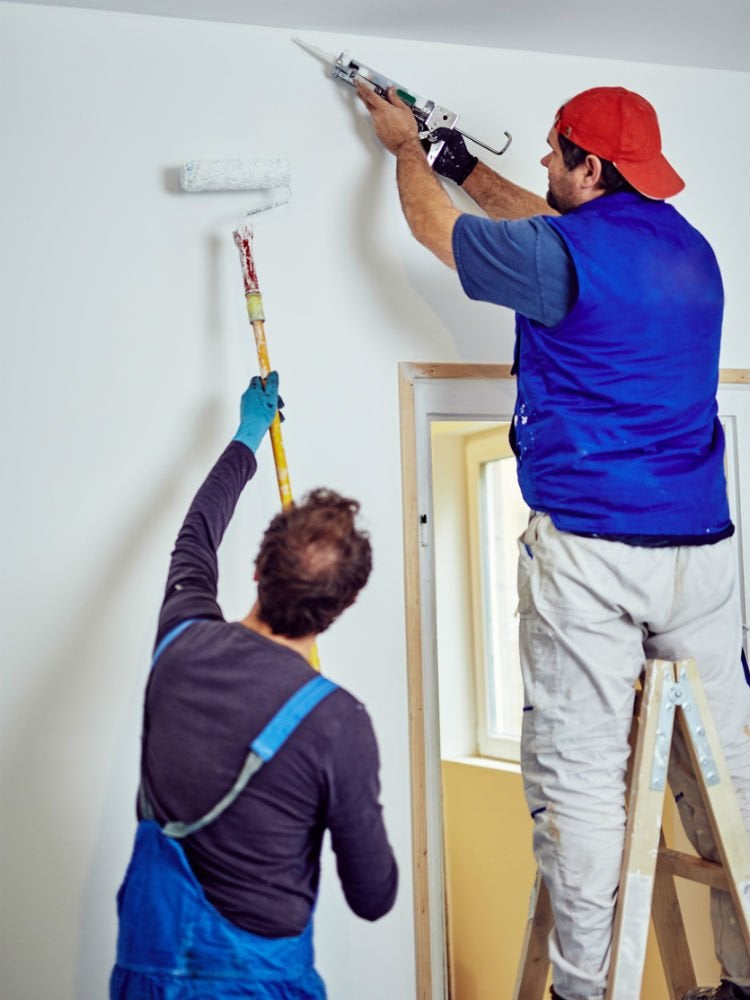
When a door opens, a nearby ladder can close or tip over and send the person on it flying. While it’s best to avoid setting up ladders near doorways, if you must position your ladder near a door, lock it and either put up a sign warning others not to use it or have a helper guard it so that no one can open the and inadvertently knock down the ladder.
#12: Using Extensible Tools
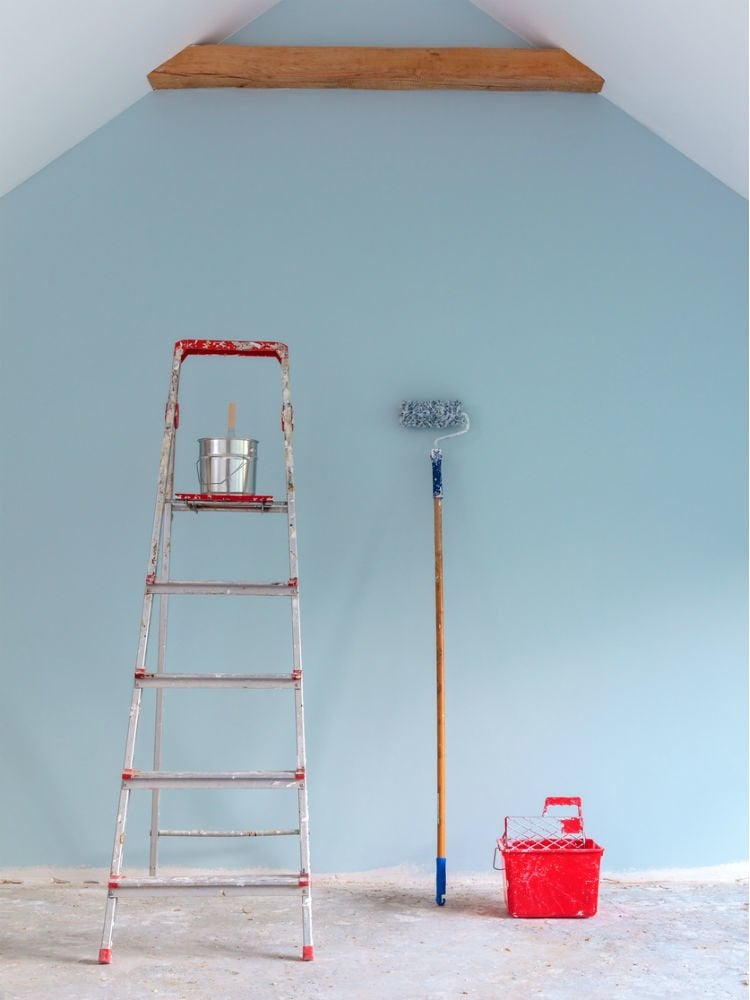
A telescoping paint roller or an extendable duster can cause a nasty spill if it catches on one of the rungs, jostles the ladder, and causes you to lose your footing and fall. Lengthy tools that also require a lot of leverage, such as a pinch bar, are even more threatening to balance. Avoid using tools with extension poles when atop a ladder; with the right ladder height and proper placement near the work area, you won’t need the added reach of these tools.
#13: Walking Underneath It
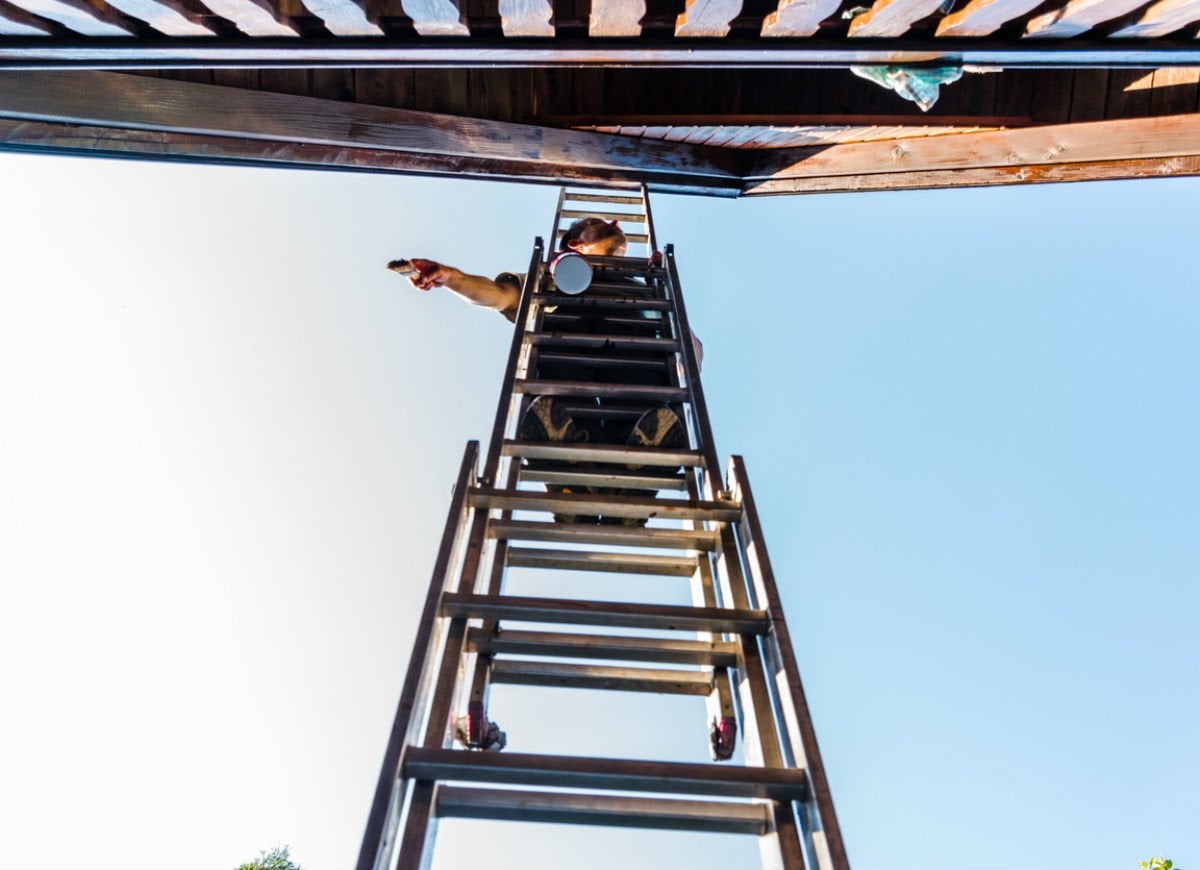
Forget those bad luck superstitions! Walking underneath a ladder that’s being used exposes you to potential fallen objects, or you can inadvertently shift the ladder and force whoever’s atop it to take a dive. Always skirt an open ladder to protect yourself and the person using it.
Ladder Safety 101
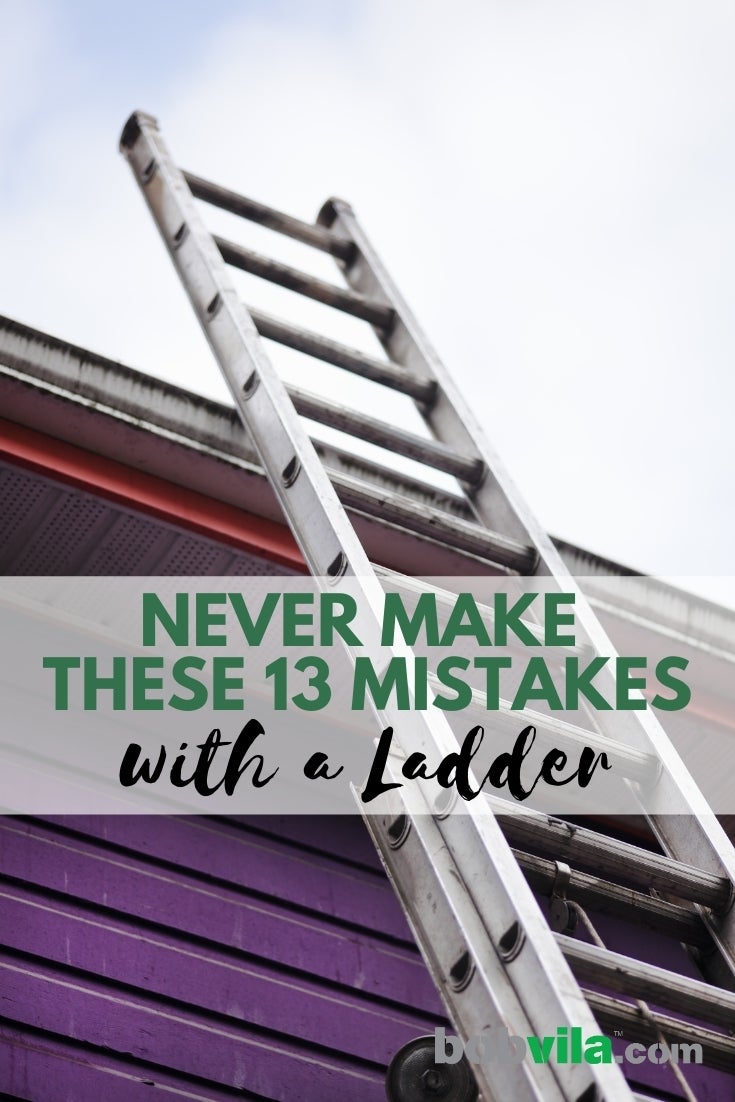
Don’t be foolish when stepping on a ladder. Always follow these safety tips.

Meet the 2025 Tools of the Year
After months of scouring the market and putting products through their paces, we’ve named the best of the best in new tools. There’s something for everyone, from veteran pros to average Joes.